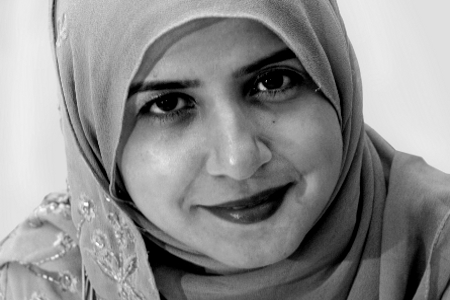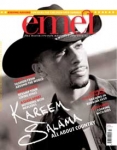
Where is the E-Ummah?
Issue 58 July 2009
The internet has created an ummah that lives up to the Prophetic idea of a nation without boundaries. The Qur’an talks of “ummah wahida”, One Nation, which the Prophet described as a body that feels the pain that any other part of the body feels. Today, it is the e-ummah that feels the pain and joy of its brothers and sisters no matter their location, ethnicity or time zone, because it has dissolved the barriers of time, culture and distance.
During the era of Muslim empires there was a sense of geographical unity, even if information about far flung reaches of its geography took time to spread. This united geography, under the banner of one religion made the ummah an easily identifiable entity. But modern times have changed the shape and distribution of Muslims. No longer are they consolidated in one area. Instead, they are spread out widely not just as a diaspora reaching out from historically Muslim lands, but being born out of native ethnicities and cultures fresh to Islam.
In a world of nation states, nationalism and declining religiosity, the enduring sense of global connectivity to an ummah based on religious affiliation is an anomaly. Muslims are questioned about how they can show patriotism at the same time as being concerned about Muslims across the globe.
But the notion of Ummah has always allowed for this layering of multiple identities. The Qur’an is quite clear that human beings have been created in different tribes with different ethnicities and languages so that people can ‘know each other’, an explicit directive to rejoice in difference and affiliation. The notion of ummah has no conflict with this. Instead, the two paradigms support the human need that at once desires to be both unique and have a sense of belonging.
The internet has for the first time created immediate connections of communication to support the reality of a global ummah. News travels within seconds, and communities are created not by geography but by interest and purpose. When a Muslim in one part of the world expresses anguish, Muslims around the globe immediately and empathetically feel their pain, experiences and joy too. The rise of the citizen journalist and blogger means that more voices are heard from the grass roots than ever before.
The internet has fostered the spiritual pursuits of education, support and encouragement too. We have seen the rise of religious learning, study groups as well of course as online matrimonials. In particular, it is worth noting that those who have historically been excluded access or participation from arenas of discussion and decision-making likes mosques and community centres - specifically women and youth - have found a forum within which to express themselves. The internet has given them freedom to explore ideas in a non-judgemental way, and to actually participate in the workings of the ummah. For these individuals in particular the e-ummah offers belonging and meaning that is lacking in their ‘real’ surroundings. It also allows the ummah to take advantage of their skills, talent and creativity - resources which the ummah has squandered over centuries and is not in any hurry to rectify.
Life is not perfect in Muslim cyberspace. Etiquette is readily thrown out of the window as people engage in insult hurling at each other over political and religious difference. Some invoke the internet’s anonymity to stir up trouble and even say things that they would never have the nerve to say in person. They feel as though the facelessness of the internet absolves them of their responsibility for respect and good manners. They feel they are not being watched. But a Muslim of all people ought to know they are always being watched: by the Watcher Himself.
The e-ummah has one other major drawback which it needs to understand and address: it isn’t really there! Islam is a religion of physicality which emphasises that social and spiritual development occurs through repeated action and ritual. The physical movements of the prayer are one such example. Rituals like the Hajj, the Friday prayer, the daily congregational prayers, and even smiling – all point to the importance of being in company with other people. What will be the impact on the individual as well as the community if we fully divert ourselves into e-tawaf and e-jumm’a?
The internet is here to stay, and the e-ummah is one of the great miracles of our time. The challenge is to make sure that we avail ourselves of the magical connections that the internet has offered us, but retain the importance of real physical interaction in our daily lives.
Bookmark this |
|
Add to DIGG |
|
Add to del.icio.us |
|
Stumble this |
|
Share on Facebook |
|
Share this |
|
Send to a Friend |
|
Link to this |
|
Printer Friendly |
|
Print in plain text |
|


Comments
3 Comments
1
BritWales
27 Oct 11, 15:18
Last paragraph - "magical connections". . .
Lucy Bushill-Mathews reflects. . . . "He gave Jonah
another chance."
With utmost respect to the writer and Editor of
Emel, it is surely preferable to use the word
'achievements' instead of 'magical' as that is a term
included with others in text which are related with
matters of "shirk", such as luck, magic, etc.
2
BritWales
27 Oct 11, 15:17
Last paragraph - "magical connections". . .
Lucy Bushill-Mathews reflects. . . . "He gave Jonah
another chance."
With utmost respect to the writer and Editor of
Emel, it is surely preferable to use the word
'achievements' instead of 'magical' as that is a term
included with others in text which are related with
matters of "shirk", such as luck, magic, etc.
3
A Hussain
3 Oct 09, 20:20
emel is a pakistani life style magazine, not a mulsim life style magazine , having the likes of Anila Baig and Saeeda warse and James Caan featured, who have very little to do with islam or muslim community, Anila Baig is simpley anti muslim from what she writes in her Sun news paper article, she said that mulsim girls were hijab because they want to save money on shampo. lol, Baig was seen on The Sun’s Front Page donning the Muslim headscarf, however she ditched the cloth early in 2007 leading to speculation that she and The Sun treated this symbol of the Islamic faith as a mere publicity gimmic